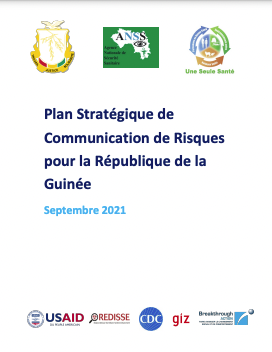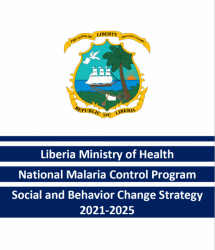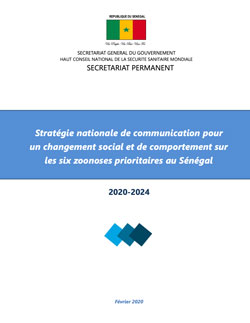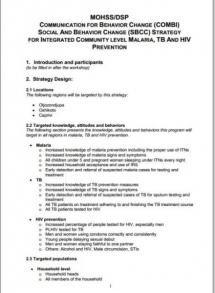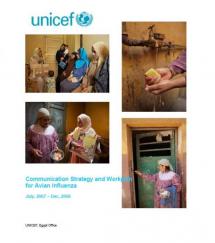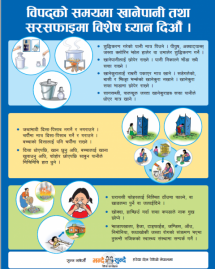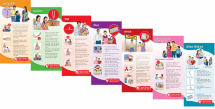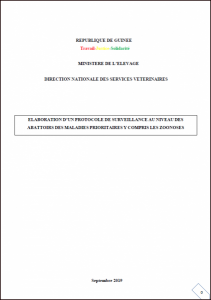Plan Stratégique de Communication de Risques pour la République de la Guinée
Ce plan de communication est fait pour guider les activités et actions de l’Agence Nationale de Sécurité Sanitaire (ANSS) en matière de communication liée aux urgences mais il est partagé avec les partenaires de la santé, les ONG, les Ministères de l’Environnement, de l’Élevage, de la Sécurité et de la Défense afin de mieux canaliser les interventions dans le cadre de la communication de risque et servir de guide sur la méthode et les modalités de la mise en œuvre des campagnes de communication de risques.
Ce plan de communication décrit les points principaux de la communication sur les risques selon le règlement sanitaire international (RSI), les stratégies, les objectifs, et les méthodes pour appuyer les différents besoins de l’ANSS en communication. Ces besoins sont principalement centrés sur une communication efficace pendant les différentes étapes d’une crise avec le but de protéger la santé de la
population et de sauver des vies.
Le plan sera mis à jour une fois par an au mois d’avril par processus de réunion de concertation, consensus et validation.
Source: Breakthrough ACTION - Johns Hopkins Center for Communication Programs
Date of Publication: October 25, 2022

